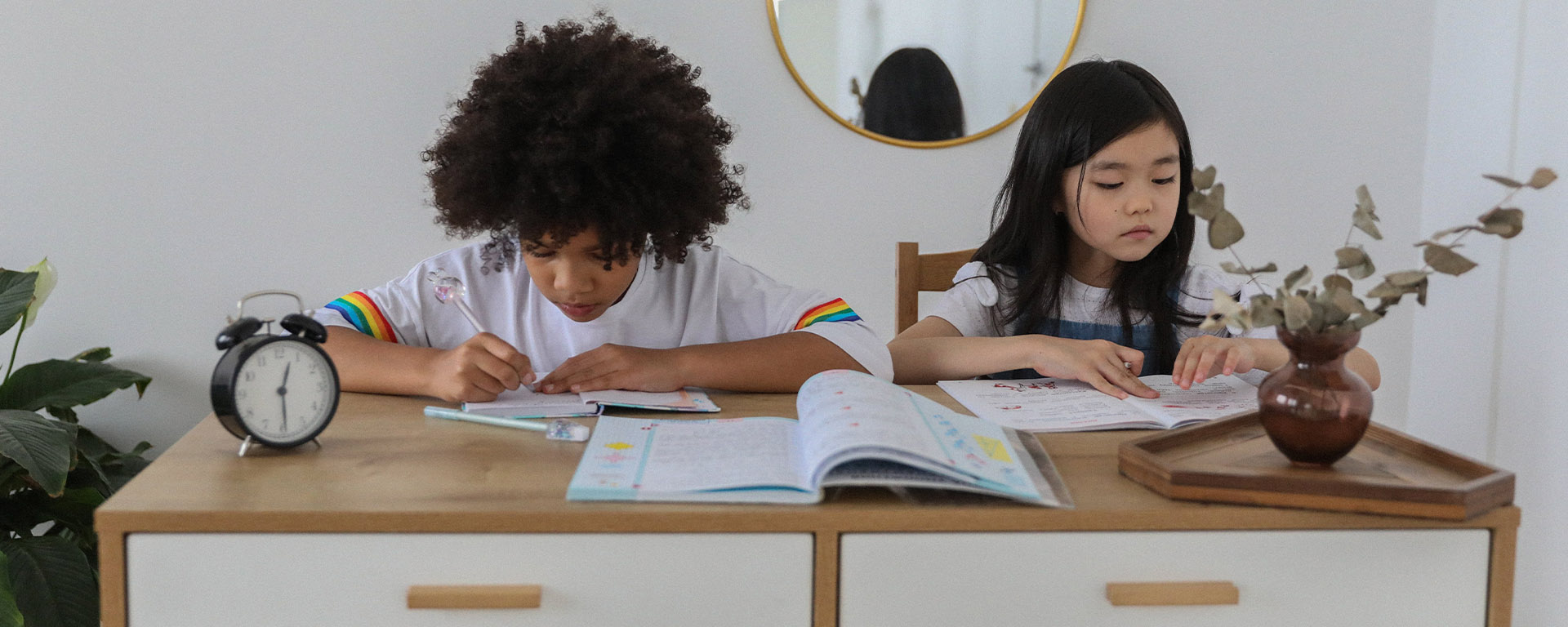Creating an organised and stimulating homework environment is essential for children to enhance their focus, concentration, and overall productivity. A well-designed homework space can make a significant difference in a child’s academic performance.
Whether you are a parent wanting to create the best possible homework zone for your child or a child looking to design it yourself, this article will provide you with valuable tips and ideas to create a productive atmosphere for studying.
Creating a Productive Atmosphere

1. Set Goals and Expectations
Before diving into the physical aspects of designing a homework environment, it’s important to set clear goals and expectations with your child. Have a conversation about the purpose of creating a dedicated study space, the importance of focus and concentration, and the goals they want to achieve. This will help in instilling a sense of responsibility and commitment towards their studies and ensure the back-to-school transition is as swift as can be.
2. Eliminate Distractions
Distractions can hinder productivity and make it difficult for children to concentrate on their studies. Identify potential distractions in the study area and take necessary steps to eliminate them. Some common distractions include electronics, noise, clutter, and unnecessary decor. Encourage your child to keep their study space clean and free from any distracting items.
3. Create a Quiet Zone
A quiet study environment is crucial for effective learning. Choose a space in your home that is away from noisy areas such as the living room or kitchen. If possible, designate a separate room or a corner solely for studying. This will help your child develop a habit of associating that space with focus and concentration.
Homework Zone Setup

Now that you have established the foundation of creating a productive atmosphere, let’s move on to setting up the physical elements of a homework zone. Consider the following factors to design an organized and stimulating homework environment.
1. Comfortable Furniture
Invest in a comfortable and ergonomic study chair and desk for your child. An uncomfortable chair or a small desk can lead to discomfort and distract from the study process. Make sure the furniture is the right size for your child, allowing them to sit with proper posture and have enough space to work comfortably.
2. Good Lighting
Proper lighting is essential for optimal studying conditions. Natural light is always the best option, so try to position the study area near a window or use sheer curtains to allow ample sunlight to enter the space. Additionally, consider adding a desk lamp for focused and directed light during the evening or in areas with insufficient natural light.
3. Desk Organisation
A cluttered desk can lead to a cluttered mind. Encourage your child to keep their desk organized by providing them with storage solutions such as drawers, shelves, or desk organizers. Teach them the importance of keeping their supplies and materials in designated places for easy access and a clean workspace.
Effective Study Environment

Creating an effective study environment goes beyond just the physical setup. It also involves incorporating elements that stimulate and engage the mind. Here are some additional tips to make the homework zone more conducive to learning.
1. Incorporate Motivational Decor
Decorate the study area with motivational posters, artwork, or inspirational quotes. These visual elements can serve as constant reminders of the importance of hard work, perseverance, and dedication. Surrounding your child with positive and uplifting reminders can help them stay focused and motivated during their study sessions.
2. Provide Necessary Supplies
Ensure that your child has access to all the necessary supplies and materials in their homework zone. This includes stationery items such as pens, pencils, markers, rulers, and notebooks. Additionally, if your child requires electronics like a computer or a tablet for their schoolwork, make sure they are readily available and charged.
3. Create a Schedule
Help your child develop good time management skills by creating a study schedule. Allocate specific times for homework and set goals for each study session. A consistent schedule will help your child develop discipline and avoid procrastination. Display the study schedule in their homework zone as a visual reminder of their commitments.
By implementing these tips and ideas, you can create a well-designed homework environment that promotes organization, focus, and productivity. Remember that every child is different, so it’s important to tailor the study space according to their preferences and needs. Regularly communicate with your child to assess their comfort level and make any necessary adjustments to ensure their learning environment is optimised.
Conclusion
In conclusion, designing an organised and stimulating homework environment is crucial for children to thrive academically. By following the tips mentioned in this article, parents can create a productive atmosphere at home that supports their child’s learning and academic success.
We understand the importance of a well-designed study environment for children and how a clean home will add to the benefits. Our services offer a range of solutions to help you maintain a spotless and healthy home, ensuring you and your children enjoy a workspace where productivity is never lacking. Book a SweepSouth cleaning service and enjoy the benefits of simplified learning and growth, more free time, and a clean and comfortable home to relax in at the end of every workday.









